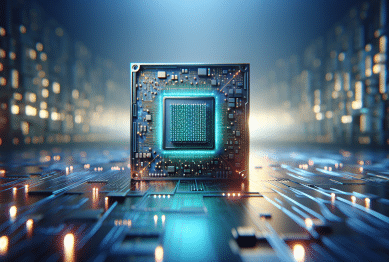Artificial intelligence continues to reshape our daily experiences in ways that often go unnoticed. This guide demystifies how AI tools, machine learning, and automation are being woven into society, making once-complex technology accessible to more people. Discover how advancements impact everything from healthcare to personal assistants in your pocket.
The Rise of Artificial Intelligence in Everyday Life
Artificial intelligence is no longer confined to science fiction or advanced laboratories. It has quietly integrated into everyday products and services, influencing how society communicates, learns, and solves challenges. Smart assistants respond to voice commands. Recommendation systems suggest music, news, or movies tailored to individual preferences. At the core of these applications is machine learning, a subset of AI that allows systems to improve by learning from data. This ongoing transformation reveals AI’s growing role, shaping industry trends and personal experiences alike.
The adoption of AI in consumer goods highlights its widespread appeal. Refrigerators can now track inventory, alerting users when it’s time to buy groceries. Smartphones use facial recognition for secure logins and even adapt to users’ routines to optimize battery life. These conveniences were unthinkable a decade ago. By embedding intelligent algorithms into familiar tech, the digital world becomes more intuitive, efficient, and responsive. As barriers to access decrease, more people engage with AI daily without realizing its complexity.
AI’s seamless integration raises important questions. How does society balance convenience with privacy and ethics? While AI enhances user experience, it’s crucial for developers, researchers, and the public to consider long-term impacts. Automation, data privacy, and the evolution of digital identities are key topics for continued discussion. Understanding the trajectory of artificial intelligence prepares communities for both opportunities and responsibilities that define the next era of technology-driven progress.
Understanding Machine Learning and Its Practical Uses
Machine learning sits at the heart of modern AI systems. This approach uses data sets to train algorithms, developing models that recognize patterns, predict outcomes, or classify information automatically. In practical terms, machine learning supports tools like email spam filters and fraud detection systems, both of which learn from experience to identify threats with greater accuracy. With every interaction, these solutions become smarter, offering tangible safety and convenience to users.
Healthcare and finance sectors have experienced profound changes through machine learning applications. In medicine, AI models can analyze images or patient records to assist in diagnosing diseases with remarkable precision (Source: https://www.fda.gov/medical-devices/digital-health-center-excellence/artificial-intelligence-and-machine-learning-software-medical-device). Financial institutions leverage advanced algorithms to detect unusual spending patterns, preventing fraud before it escalates. These advancements not only boost efficiency but also help mitigate human error, making critical systems more reliable.
Education also benefits from machine learning innovations. Adaptive learning platforms help students by customizing lesson plans and resources based on strengths and weaknesses. Automated grading tools handle repetitive tasks, allowing educators to focus on personal interaction. Over time, such developments can reduce barriers to quality education while accommodating diverse learning styles. As research continues, the boundaries of what machine learning can achieve stretch ever further, promising new avenues for inclusion and progress.
Automation: Streamlining Work and Everyday Tasks
Automation, powered by artificial intelligence, is transforming industries by reducing repetitive workload, minimizing errors, and freeing up human talent for creative roles. For example, in manufacturing, AI-driven robots work alongside people on assembly lines, handling high-precision tasks with consistency (Source: https://www.nist.gov/programs-projects/intelligent-systems-division). In the office environment, software bots help coordinate schedules, send reminders, and compile reports—activities that once consumed significant time and effort.
This trend extends into homes as well. Smart thermostats learn and adapt to preferred temperature settings, improving comfort while saving energy. Vacuum robots clean automatically, adjusting patterns for carpets and hard floors with little user intervention. These advancements make household management smoother and less time-consuming. Automation is not about replacing humans; it’s about amplifying what people can accomplish by handling repetitive chores more effectively.
As businesses and individuals embrace automation, new opportunities arise for upskilling and reskilling the workforce. Rather than causing job loss, automation changes the nature of work, prompting growth in fields such as data analysis, AI programming, and digital design. Many organizations now offer specialized programs to teach employees how to collaborate effectively with AI-driven systems. By understanding the technology, individuals prepare themselves to benefit from automation’s evolving landscape rather than simply adjusting to it.
AI’s Role in Transforming Healthcare and Wellness
Healthcare continues to be a flagship sector for AI innovation. Diagnostic tools enhanced by artificial intelligence analyze complex images, spot subtle disease markers, and even suggest personalized treatment plans. Technology like natural language processing helps sift through vast medical records, supporting physicians in making informed decisions faster. Initiatives from organizations like the National Institutes of Health demonstrate a shared commitment to harnessing AI for better health outcomes (Source: https://www.nih.gov/research-training/medical-research-initiatives/bridge2ai/bridge2ai-program).
Wearable fitness devices use advanced sensors and AI algorithms to track vital signs, recommend fitness routines, and alert wearers to potential health risks in real-time. These real-world applications foster proactive health management. Beyond personal devices, public health agencies use machine learning to predict disease outbreaks or model vaccine distribution, helping allocate resources more efficiently and effectively. Such approaches prove critical when responding to global health challenges.
Despite major advances, responsible AI use in healthcare demands careful consideration of ethics and privacy. Ensuring data is secured and used transparently builds public trust. Civil society groups and policymakers work together to address unintended consequences and promote equitable access to life-saving technology (Source: https://www.who.int/teams/digital-health-and-innovation/artificial-intelligence). With broad collaboration, artificial intelligence promises a healthier, more inclusive future for all.
Natural Language Processing: Communicating with Machines
Natural language processing, or NLP, is a field within AI focused on how computers understand, interpret, and generate human language. It powers virtual assistants capable of answering questions, setting reminders, and even making appointments. NLP enables real-time translation between languages, making global information accessible across borders. Sentiment analysis tools help companies gauge customer satisfaction by analyzing reviews and feedback at scale.
NLP is also essential for accessibility. Voice recognition and text-to-speech systems support individuals with disabilities, providing alternate ways to interact with technology or access written content. Educational platforms use NLP to generate summaries, quiz questions, or practice exercises tailored to unique learning profiles (Source: https://www.nsf.gov/news/special_reports/nsfai/why-artificial-intelligence.jsp). The result is a more personalized, efficient, and inclusive experience across digital platforms.
The possibilities of NLP continue to grow. Researchers explore advanced methods such as sentiment-aware storytelling, automatic legal document analysis, and AI-generated creative writing. Chatbots drive better customer support, while AI-driven analysis of social trends shapes policy decisions and business strategies. With ongoing investment, NLP’s potential to bridge digital divides and foster communication is only beginning to be realized.
Responsible AI: Ethics, Privacy, and Future Implications
The rapid integration of AI into daily life brings not only convenience but also ethical dilemmas. Ensuring artificial intelligence is developed and applied responsibly has become a key topic for industry, academics, and governments. Concerns about algorithmic bias, data privacy, and accountability drive global conversations. Transparent development standards, stakeholder collaboration, and independent audits are part of creating AI that serves everyone fairly (Source: https://www.brookings.edu/research/ai-governance-challenges/).
Privacy is central to responsible AI. Organizations are developing frameworks that prioritize user consent and data security. Open discussions about how personal information is handled build trust in AI applications. Policymakers, technologists, and advocacy groups collaborate on updated regulations that maintain a balance between innovation and fundamental rights. As digital footprints expand, ongoing efforts seek to strengthen safeguards and foster a culture of tech responsibility.
Looking ahead, responsible AI development ensures these powerful tools address pressing societal needs while safeguarding against misuse. Educators encourage digital literacy so people can participate thoughtfully in this ever-evolving landscape. As AI’s influence grows, thoughtful guidance will empower communities and individuals to leverage artificial intelligence for collective well-being without sacrificing ethical standards or privacy.
References
1. U.S. Food and Drug Administration. (n.d.). Artificial Intelligence and Machine Learning in Software as a Medical Device. Retrieved from https://www.fda.gov/medical-devices/digital-health-center-excellence/artificial-intelligence-and-machine-learning-software-medical-device
2. National Institute of Standards and Technology. (n.d.). Intelligent Systems Division. Retrieved from https://www.nist.gov/programs-projects/intelligent-systems-division
3. National Institutes of Health. (n.d.). Bridge2AI Program. Retrieved from https://www.nih.gov/research-training/medical-research-initiatives/bridge2ai/bridge2ai-program
4. World Health Organization. (n.d.). Artificial Intelligence. Retrieved from https://www.who.int/teams/digital-health-and-innovation/artificial-intelligence
5. National Science Foundation. (n.d.). Why Artificial Intelligence? Retrieved from https://www.nsf.gov/news/special_reports/nsfai/why-artificial-intelligence.jsp
6. Brookings Institution. (2023). Addressing governance challenges in AI adoption. Retrieved from https://www.brookings.edu/research/ai-governance-challenges/









